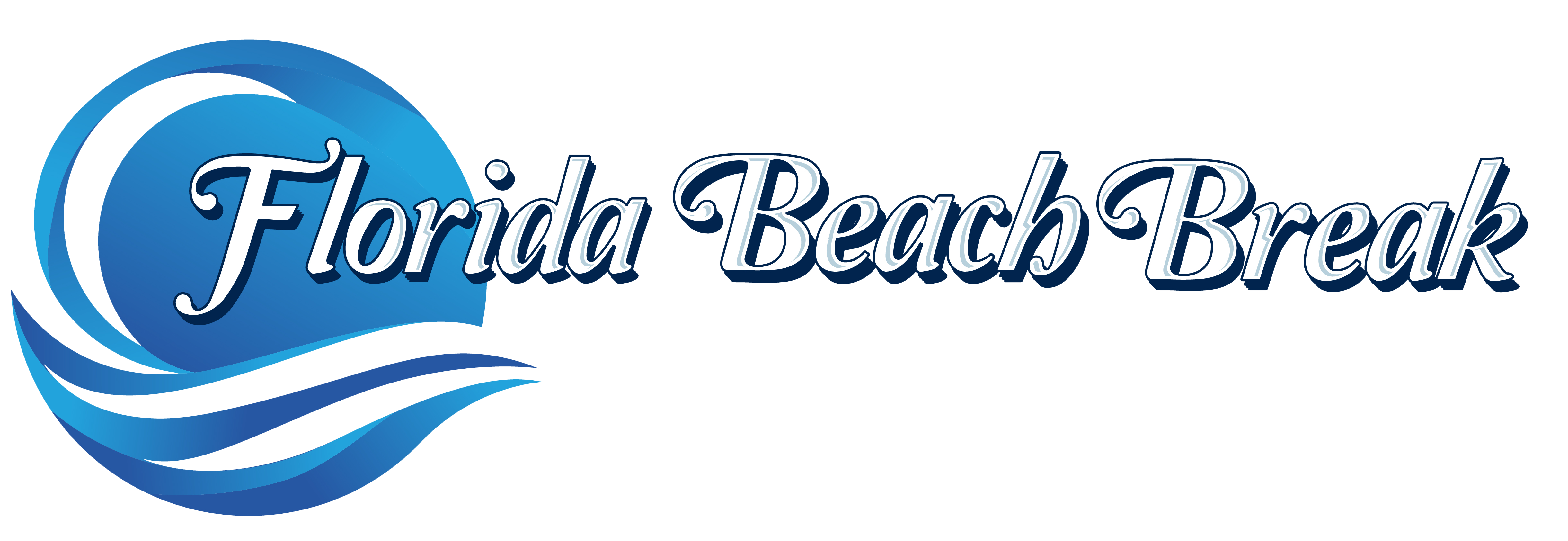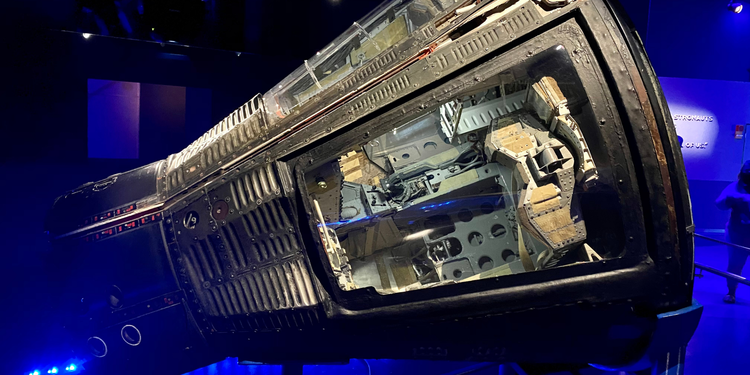
by Nate Beck -
Kennedy Space Center has been home to the launch pads of the hopes and dreams of millions of Americans for over half a century and Kennedy Space Center at Cape Canaveral has re-opened for you to not only step into history, but also into the future of space exploration. For those fascinated by space travel and technology like I am, you’ll be in awe of one of the largest collections of space-flown vehicles in the United States, so easily accessible at the Kennedy Space Center Visitor Complex.
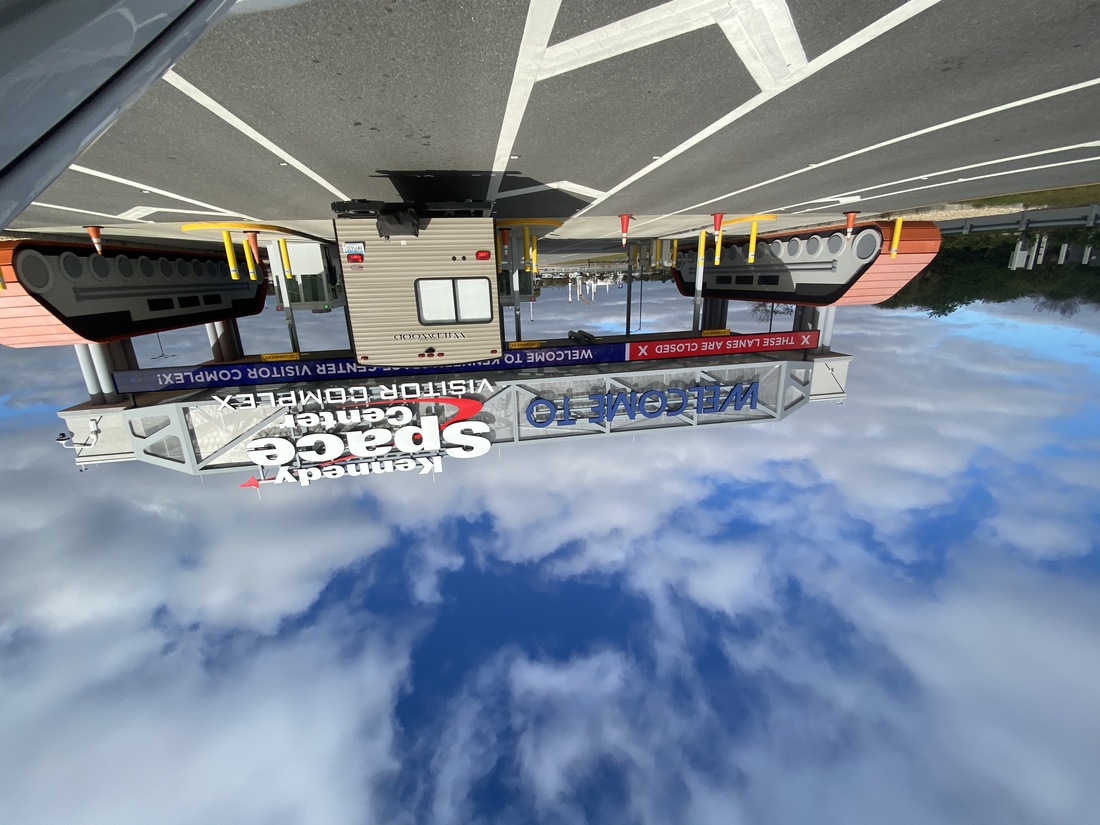 With kids' studying remotely due to COVID, the classroom is anywhere....
With kids' studying remotely due to COVID, the classroom is anywhere.... via computer in the camper and in person at Kennedy Space Center.
KENNEDY SPACE CENTER TOURS
Kennedy offers many different tours and experiences covering every era of space exploration.
Heroes And Legends
The Heroes and Legends exhibit celebrates the early days of NASA. Upon entering the Heroes and Legends exhibit, you walk into a cylindrical room where history comes to life as the walls light up playing interviews from the astronauts and engineers speaking about the early days and the challenges faced. Continuing on, Kennedy has procured personal belongings from early Space pioneers that are on display, building up to the chance to view the Gemini 9A Spacecraft as well as the Mercury Mission Control.
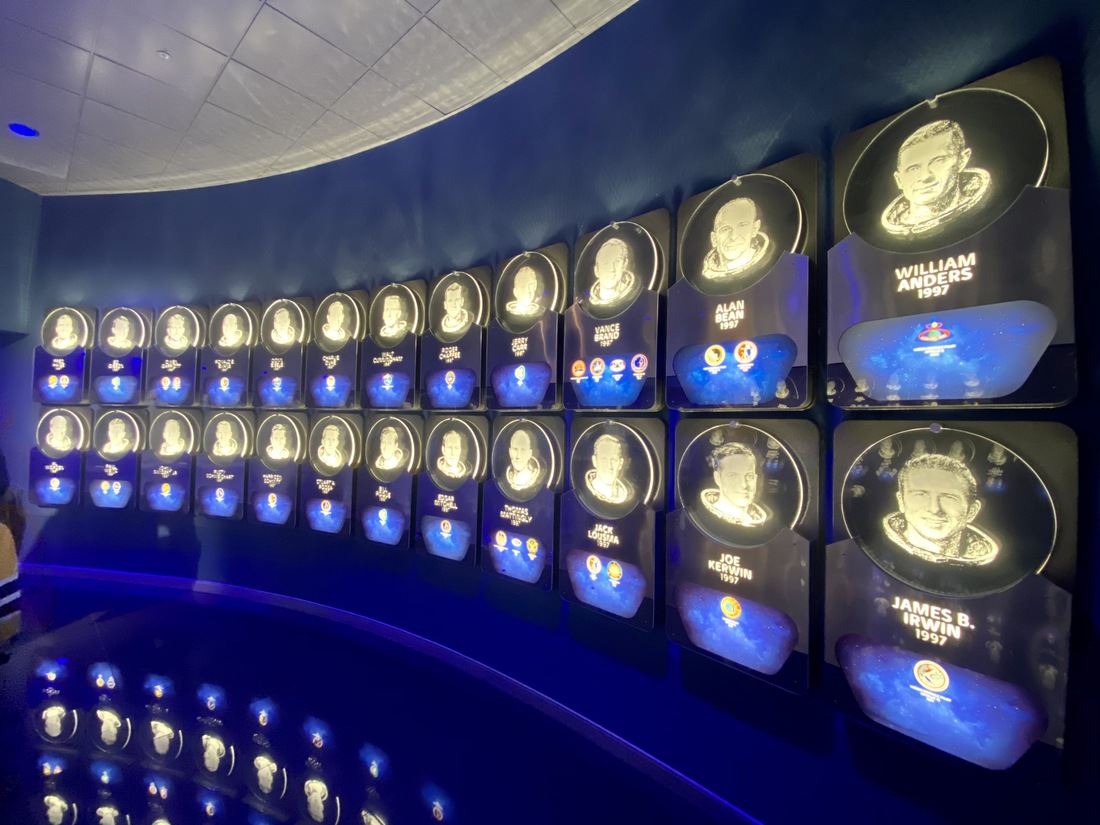 Kennedy Space Center Astronaut Hall of Fame
Kennedy Space Center Astronaut Hall of FameThe Heroes and Legends exhibit concludes with exiting the building and walking in Kennedy’s Rocket Garden amongst some of the rockets flown in those early missions.
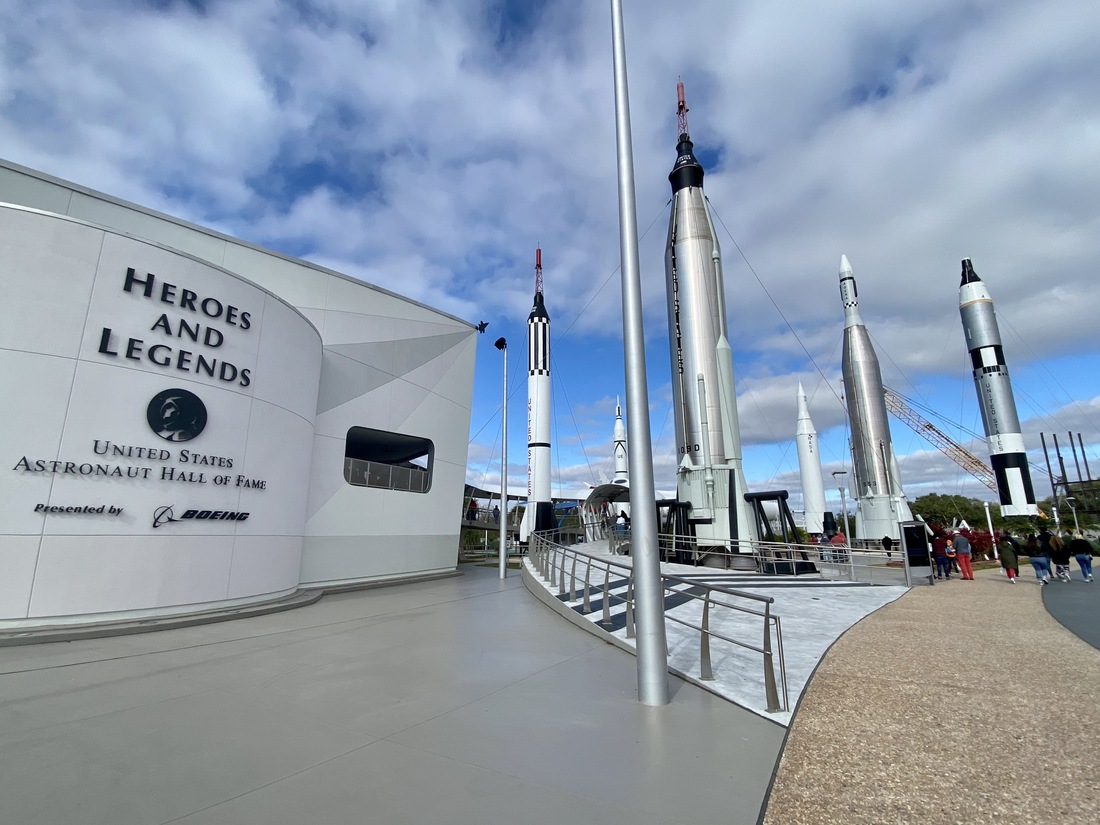
Apollo 14 Refresher
If you were born after 1962, chances are you don’t remember the launch of Apollo 14 but it was a huge deal for the times. Had social media existed then, it would surely have been the top trending hashtag around the world.
Apollo 14 was the third spacecraft to land on the moon and the first to land in the lunar highlands area. The purpose of Apollo 14 was to further understand the makeup of the moon through detailed lunar scientific experimentations.
Imagine how the Apollo 14 astronauts, Alan B. Shepard Jr., Stuart A. Roosa and Edgar D. Mitchell, must have felt as they sat on the launch pad. The mission before them, Apollo 13, had experienced a significant technical failure that put the astronauts in extreme danger. Yet these three men were willing to risk their lives for continued space exploration.
All eyes were on NASA, Kennedy Space Center and Apollo 14 and it was nearly another disaster. Apollo 14 was plagued with problems that began on the launch pad. Due to the Space Coast's random and rapidly changing weather patterns, there was a 40 minute and 2 second delay at launch due to rain and clouds. After a safe launch, mid course corrections had to be made to make up for lost time on the pad to ensure arrival at the moon on schedule.
Later in flight, it took five attempts to dock the Command and Service Module to the Lunar Module due to docking ring catches not releasing followed by a second and third course correction in the days following.
Luckily, Apollo 14 was still able to continue on schedule and reach the lunar surface where they investigated the lunar field geology and collections of samples of surface material. All in all, Apollo 14 brought back a staggering 100 pounds of moon rock for further evaluation.
Through the “near-aborts” that kept NASA engineers on the edge of their seats, Shepard, Michell, and Roosa were able to complete their mission and bring Apollo 14 home, resurrecting NASA’s reputation in the public’s eye.
Americans delighted in not only the fact that men were again walking on the moon, but this time Commander Alan B. Shepard, Jr. added a little levity to the trip when he hit two golf balls off the surface of the moon.
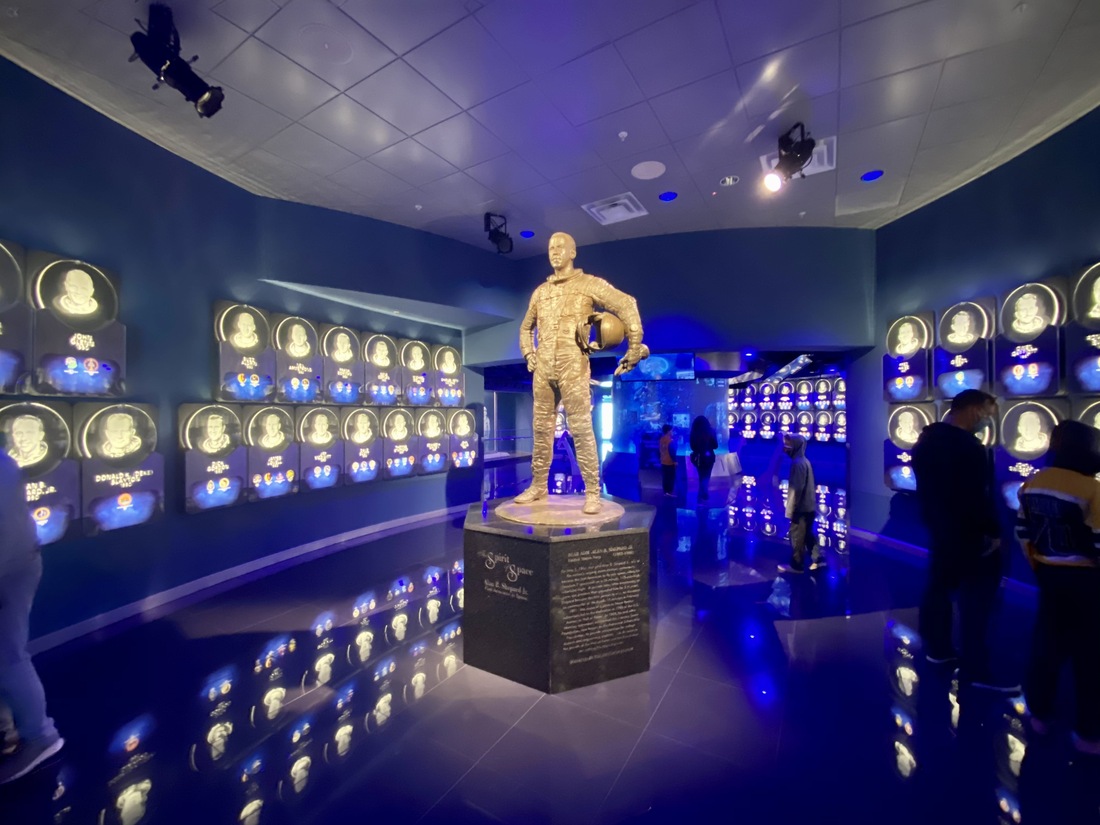
Race to the Moon Exhibit and Apollo’s Treasures Gallery at the Saturn V Center
The Saturn V Center at Kennedy includes priceless artifacts from the Apollo Era, including prototypes and training gear of that era, the moon dust-covered space suit worn by Shepard when he hit those golf balls and the actual crew capsule that safely delivered the astronauts of Apollo 14 back to earth.
The Apollo 14 crew capsule, named Kitty Hawk was, according to NASA, “crafted with more than 2,000,000 parts; nearly 15 miles (24 km) of wire; a control panel with 24 instruments, 566 switches, 40 indicators and 71 lights.”
At the entrance to the Center sits a real Saturn V rocket which we encourage you to stand under for a complete understanding of its size and heft.
Shuttle: A Ship Like No Other
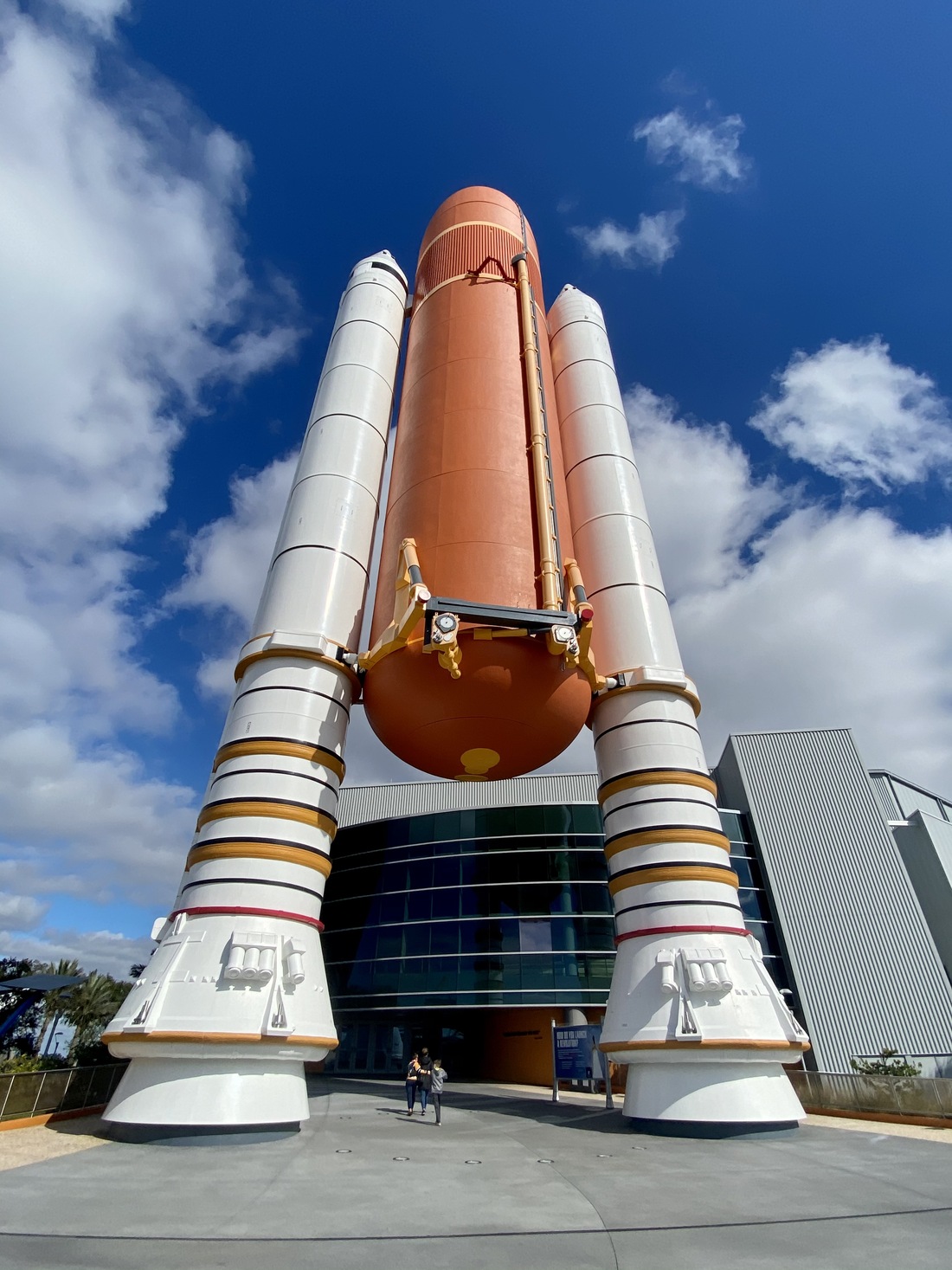
When the shuttles were retired, Atlantis found her forever home on display at Kennedy Space Center for you to bask in all her majestic glory. She’s perched on her side at 43.21 degrees angle, with her payload bay doors open and robotic arm extended, just as she did while orbiting the earth so many times.
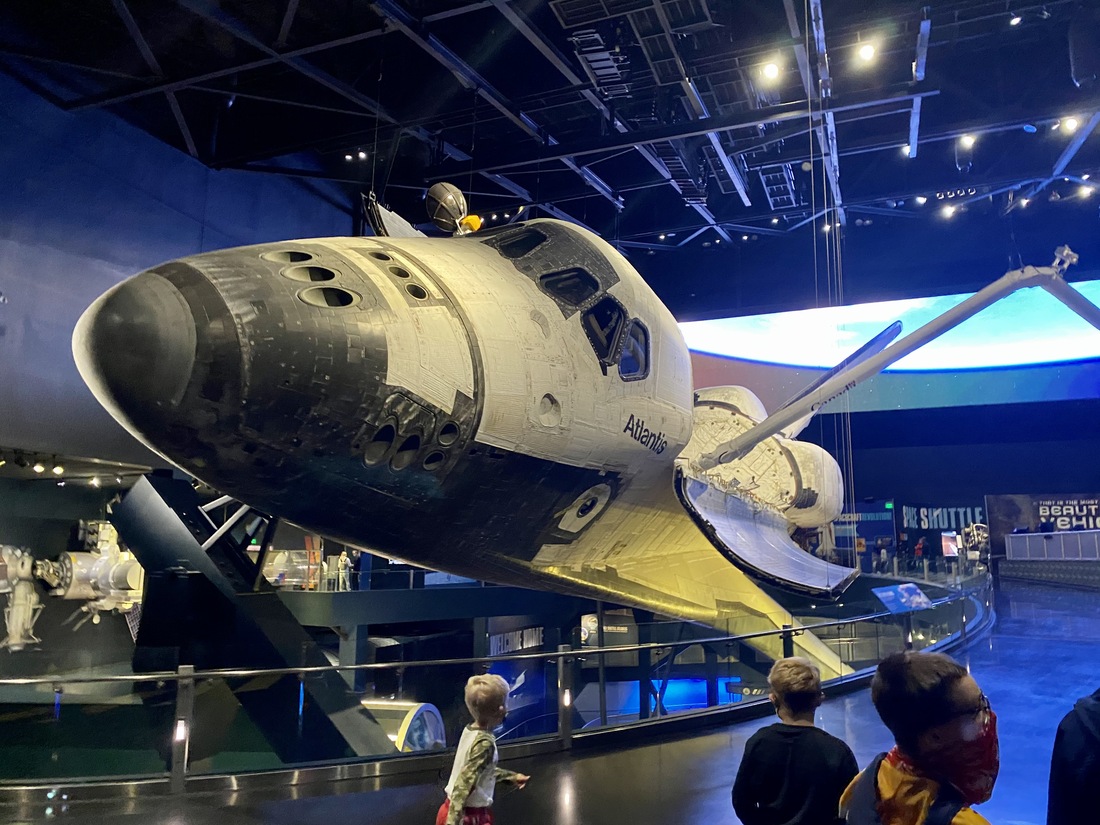
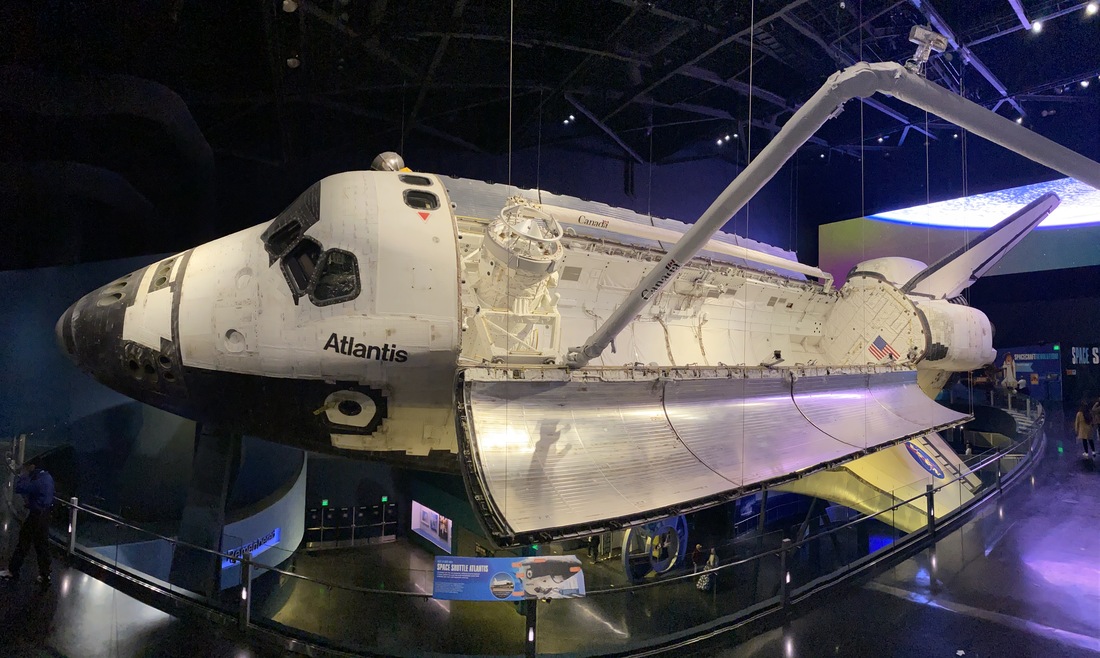
NASA Now
During your Kennedy Space Center Tours, be sure to check out the “NASA Now” exhibit, which currently displays
- Scale model of NASA Space Launch System (SLS)
- Full-scale model of NASA’s InSight Lander
- SpaceX Dragon Cargo Vehicle from COTS-2 Mission
- Scale model of Sierra Nevada Dream Chaser Cargo Vehicle
- Vector-R rocket from Vector
- Orion Crew Vehicle from EFT-1 Mission
- Boeing CST-100 Starliner Crew Vehicle Full-Scale Engineering Model with access to the interior
- Scale model of ULA Atlas V Rocket
- CubeSat nanosatellite, courtesy of Vector
- Moon Express MTV-1 (Moon Express Test Vehicle) working prototype
2011 saw the retirement of the Space Shuttle Program. Due to the age of each shuttle, 20 plus years, the cost to rehab them and combine new technology with old, NASA decided the best solution would be to reallocate the budget from the Shuttle Program to Artemis/SLS/Orion, the new launch vehicle.
With NASA entering a new era and no space shuttles to launch, the void opened the door for the private sector to step in and bridge the gap.
SpaceX Dragon
The vision of privatized space travel was sealed May 30th, 2020 when NASA Astronauts Doug Hurley and Robert Behnken launched from Kennedy Space Center aboard a SpaceX Dragon spacecraft. Much like the government's transcontinental railroad linking the east and west coast in the 1800’s, the US government had now linked earth to space, and given it to the private sector to flourish.
With SpaceX well on its way to dominance in the private sector, the SpaceX Dragon capsule has flown 23 total launches; 22 of which visited the International Space Station. With an internal volume of over 100 more cubic feet than the Apollo Capsule, the SpaceX Dragon spacecraft can accommodate private citizens tagging along for the ride should the need - or opportunity - arise.
While touring Kennedy Space Center at Cape Canaveral, visitors are able to view the SpaceX Dragon COTS-2 capsule that was used in space as well as NASA’s Exploration Flight Test 1 Vehicle which was the first Orion spacecraft to be flown in space. NASA Now is focused on having a revolving display of the most current spacecraft from not only NASA but its commercial partners as well.
HISTORY OF KENNEDY SPACE CENTER
Kennedy Space Center has called the sprawling 42 acres on Merritt Island home since its inception in the early 60’s.
With humble beginnings rooted in sharing the wonder of space exploration with the public, NASA Administrator James Webb began self guided tours in 1963 in which the public could drive along a predetermined route through the Cape Canaveral Air Force Station which NASA was using at the time for their launches.
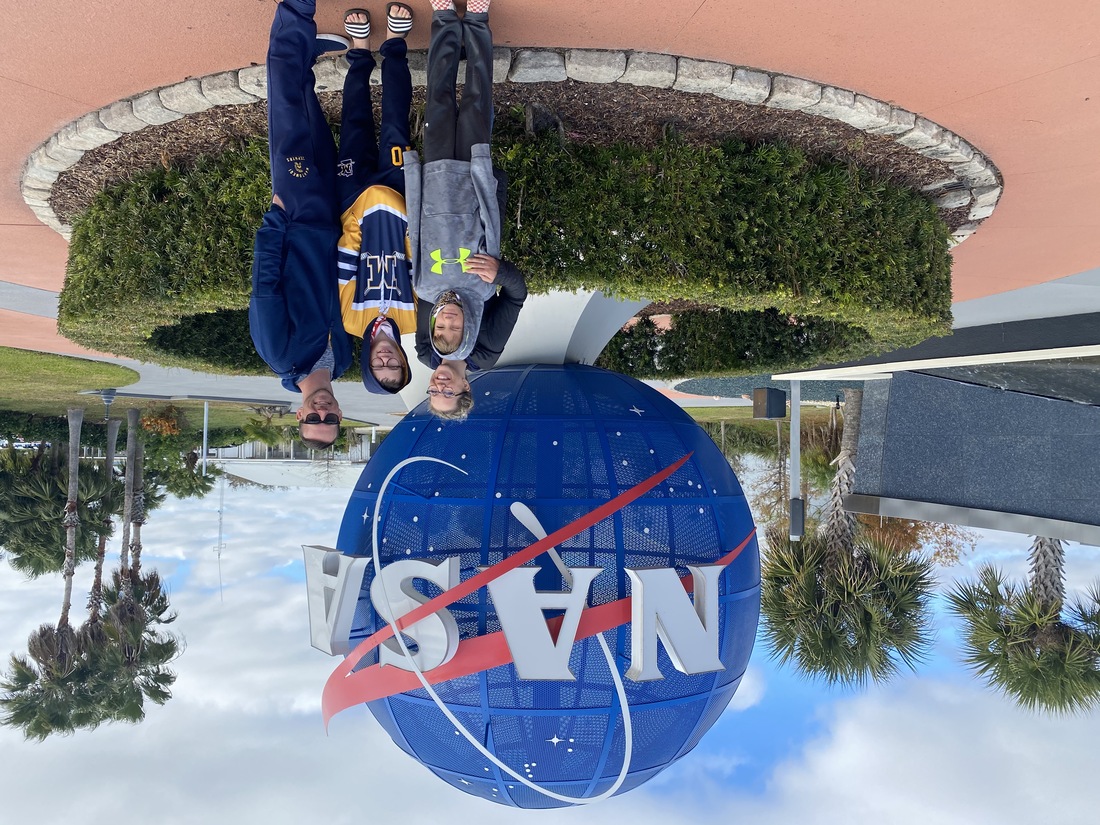
250,000 Visitors In One Year Proved Demand for Permanent Visitor Center
By 1964 James Webb had welcomed over 250,000 visitors and it was clear that a permanent visitors center was needed. In 1965 Kennedy Space Center Director Kurt Debus authorized a 2 million dollar budget to build the visitors center, titled Spaceport USA. With the moon landing soon coming to fruition the Visitors Center became the second most visited Florida attraction with attendance over one million guests.
Through the 70’s, 80’s, 90,s and into the 2000’s, as NASA grew, so did the Visitor Center.
All in all Kennedy Space Center has enough history, exhibits and bus tours to last you days, so pick and choose wisely or you may have to come back twice.
Speaking of coming back twice, if you are interested, Kennedy Space Center offers multi-day passes so you don’t have to feel rushed to take it all in in one day.
KENNEDY SPACE CENTER TICKETS
DAILY ADMISSION TICKETS
- Adult (age 12+) $57
- Child (age 3-11) $47
MULTI-DAY ADMISSION TICKETS
- Adult (age 12+) $82
- Child (age 3-11) $67
Due to COVID 19, Kennedy Space Center Cape Canaveral is currently restricting visitors to only visiting on the day selected at the time you purchase your ticket.
Before you purchase your Kennedy Space Center Tickets it’s important that you know that not all exhibits are open at this time. At this time, these are the exhibits currently open during your Kennedy Space Center Tour:
- Heroes and Legends featuring the U.S. Astronaut Hall of Fame®
- Rocket Garden
- Nature and Technology
- Space Shuttle Atlantis ® with Shuttle Launch Experience®
- NASA Now
- Journey to Mars: Explorers Wanted
- Universe Theater
- IMAX Theater
- Children's Play Dome
- Character appearances
Exhibits that are currently closed include:
- Kennedy Space Center Bus Tour including the Apollo/Saturn V Center
- Dine With An Astronaut and astronaut appearances
- Special Interest Tours
- Overnight Adventures
PARKING
Parking is not included with the single-day admission ticket. One-day of parking is included in your multi-day ticket purchase, however you cannot use it on your first visit. Expect to pay for parking.
- Motorcycles $5
- Automobiles $10
- Oversized vehicles, motor homes or RVs $15
KENNEDY SPACE CENTER HOURS
Kennedy Space Center is currently open 10am - 4pm daily. These reduced hours allow more time for cleaning and sanitizing.
Kennedy Space Center is a working space flight facility
- Tours and times are subject to change without notice
- If a rocket launch occurs during operating hours of Kennedy Space Center Visitors Center, you may be able to view the launch from the main visitor complex.
While we will continue to update this article as new information becomes available, we encourage you to check the Kennedy Space Center website for the most up-to-date information about Kennedy Space Center Hours and which exhibits are open.
